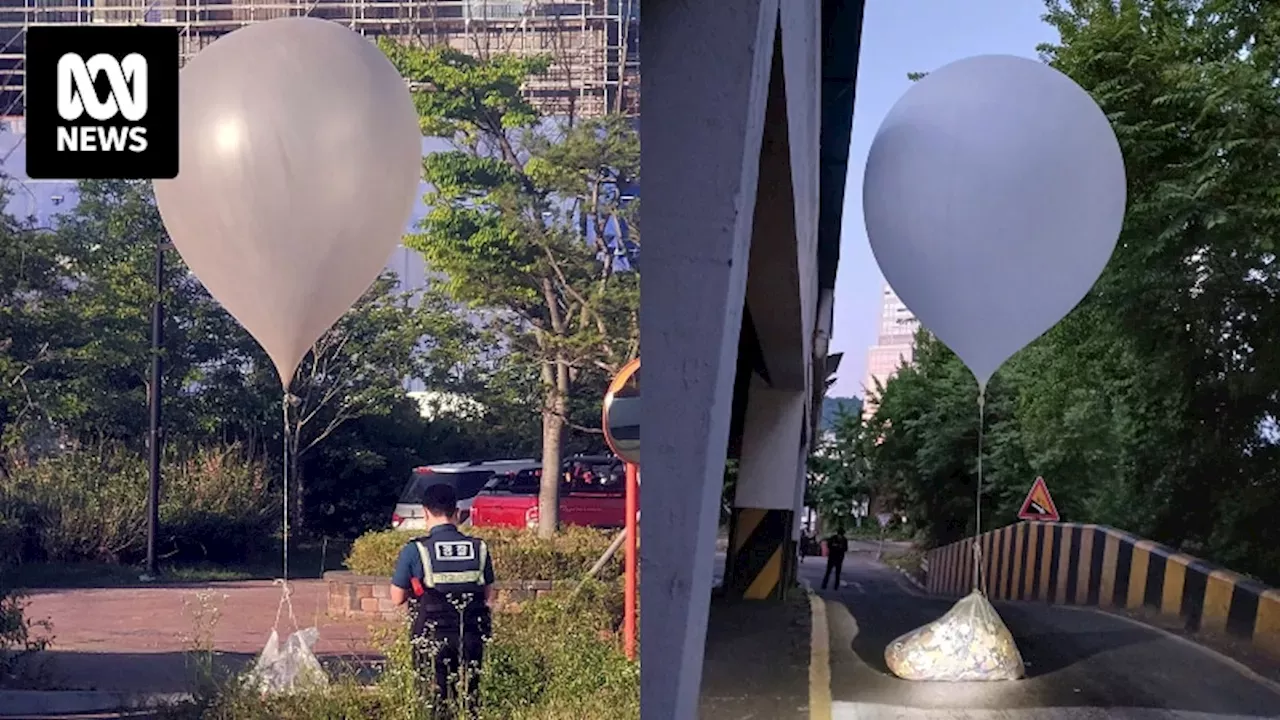
Slammed by Washington’s South Korean allies as a “nonsensical, irrational” and “low-class” “provocation,” the Democratic People’s Republic of Korea’s declaration of a trash balloon war is really a response to South Korean propaganda balloon incitements that go back decades.
North Korea doubled down on its trash balloon offensive Saturday night, with the South Korean Joint Chiefs of Staff reporting Sunday that over 700 rubbish-filled projectiles had been discovered in urban areas, rural farmland, and tangled in trees in areas across South Korea.
Filled with cigarette butts, scrap cloth, waste paper, waste batteries, and compost, the weekend’s act of balloon-based bellicosity came after a first salvo of 260 North Korean balloons – which reportedly included manure mixed in among other trash, made their way south on Wednesday.
Pyongyang says its trash balloon offensive is a tit-for-tat reaction to South Korea’s “provocative encroachment” on the North’s sovereignty, using everything from drills and spy drones to propaganda leafleting campaigns.
“The US and [South Korean] puppet air force are still seriously encroaching upon the sovereignty and security of the DPRK, conducting air espionage at the level beyond the wartime situation by repeatedly mobilizing RQ-4B reconnaissance drones and other reconnaissance aircraft almost without any time lag every day. Such hostile military espionage, together with various military drills, has become the root cause of ever-escalating regional military tensions. Recently [South Korea] has become undisguised in its despicable psychological warfare by scattering leaflets and various dirty things near border areas of the DPRK,” North Korean Deputy Defense Minister Kim Kang Il said in a press statement on May 26.
“Scattering leaflets by use of balloons is a dangerous provocation that can be utilized for a specific military purpose. We have already clarified our stand on the dangerous farce of scattering things by balloons,” Kim stressed.
Accordingly, he warned, “tit-for-tat action will be…taken against frequent scattering of leaflets and other rubbish by South Korea near border areas. Mounds of wastepaper and filth will soon be scattered over the border areas and the interior of South Korea and it will directly experience how much effort is required to remove them. When our national sovereignty, security and interests are violated, we will take action immediately.”
Kim’s comments on the amount of effort required to remove South Korean balloon-scattered leaflets are no trivial matter. US-sponsored defectors and South Korean “pro-democracy” organizations have spent decades and millions of dollars on their balloon-based campaign of psychological warfare.
In May, notorious South Korean litter-based propagandist group “Fighters for a Free North Korea,” a US National Endowment for Democracy and State Department Bureau of Democracy, Human Rights and Labor-affiliated NGO, boasted that it had sent another party of 20 large balloons containing 300,000 leaflets and 2,000 USB storage devices into North Korea.

Any UN Expert Panel on Sanctions Against N. Korea Doomed to ‘Self-Destruction’ – Diplomat
5 May, 08:21 GMT
The NGO’s campaign has been going on since at least the early 2000s, flouting resolutions in an inter-Korean summit in the year 2000 in which Pyongyang and Seoul agreed to stop state-sponsored efforts to engage in psychological warfare against one another’s citizens. The contents of South Korean propaganda balloons have evolved over time, ranging from DVDs and flash drives with South Korean and Hollywood movies and K-pop music on them (North Korean leader Kim Jon Un once described the latter as a “vicious cancer”) to brochures and even small transistor radios, candy bars, miniature Bibles, and dollar bills.
“Fighters for a Free North Korea” and its allies have received lavish praise from the beacons of Western mainstream media, with The Atlantic running a beaming piece in 2014 entitled “We Hacked North Korea With Balloons and USB Drives.”
But besides the supposedly more innocuous aspects of cultural and propaganda warfare, North Korea has expressed concerns that South Korean balloons may be carrying other things – like viruses. In 2020, Kim Jong Un ordered the destruction of a liaison office with Seoul in Kaesong, reportedly after learning that South Korean balloons carrying photoshopped pornographic images smearing his family had been sent north.
 A test of the Korean People’s Army’s KN-25 short-range ballistic missile, with a range of 380 kilometers – Sputnik International, 1920, 29.05.2024
A test of the Korean People’s Army’s KN-25 short-range ballistic missile, with a range of 380 kilometers – Sputnik International, 1920, 29.05.2024
Why Antagonizing Pyongyang is a Really Bad Idea: Top 6 North Korean Weapon Systems
29 May, 15:47 GMT
North Korea’s trash balloon warfare campaign is apparently a signal that Pyongyang has had enough, and is no longer prepared to tolerate Seoul’s continued provocations without a response. The message seems pretty clear: if Seoul wants to send its K-pop and Hollywood movie flash drives and leaflets north, Pyongyang will send its own rubbish south.
Kim Yo Jong, deputy director of the Publicity and Information Department of North Korea’s governing Korean Workers’ Party, confirmed on Wednesday that Pyongyang will turn its trash balloon campaign into its standard reaction to South Korean balloon-based provocations.
“We make it clear that we will respond to [South Korea’s] clans on a case-by-case basis by scattering rubbish dozens of times more than those being scattered on us in the future,” she warned.
But South Korea has shown no plans of backing down, with the country’s Unification Ministry warning Friday that if the North doesn’t stop its trash balloon campaign, it will face “unbearable” consequences, the details of which it did not elaborate.
In the meantime, the propaganda and trash balloon campaign will likely remain a major headache for both countries’ militaries – with neither seeking to expend expensive munitions on the low-cost balloons, much less risk raining anti-missile fire or bullets down on populated areas.
 The 75th anniversary of the founding of the DPRK is celebrated with a grand parade in Pyongyang. – Sputnik International, 1920, 24.04.2024
The 75th anniversary of the founding of the DPRK is celebrated with a grand parade in Pyongyang. – Sputnik International, 1920, 24.04.2024
What’s Known About Iran-North Korea Relations?
24 April, 16:19 GMT
By Ilya Tsukanov
Published by Sputnik Globe
Republished by The 21st Century
The views expressed in this article are solely those of the author and do not necessarily reflect the opinions of 21cir.com
